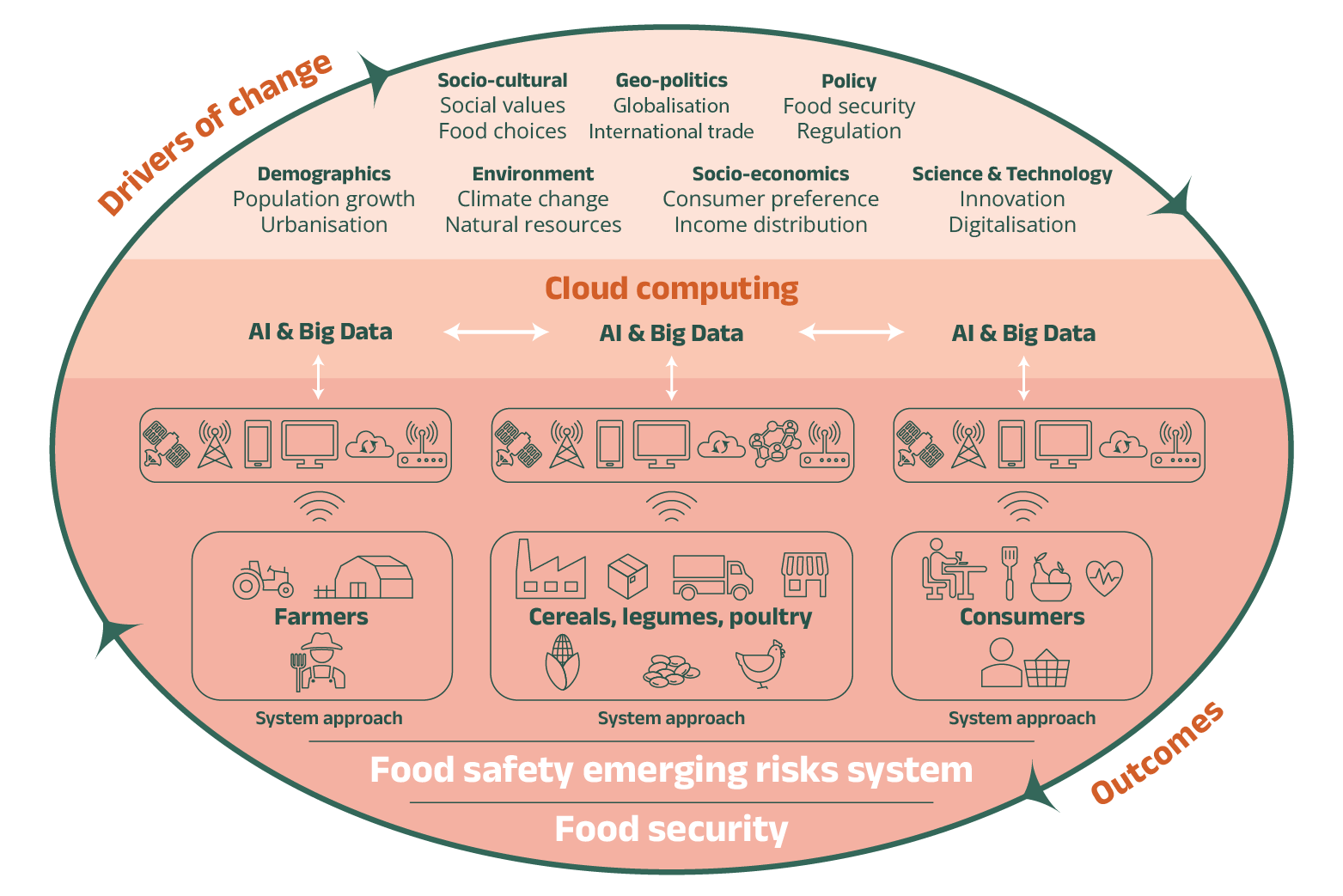Holistic Approach

Emerging consumer practices, transition to sustainable food systems, climate change effects, agri-food innovation and population growth are all drivers that require holistic risk assessment to foster solutions that maximise co-benefits for environment, health, society and economy.
In the context of food systems, a driver is an “issue shaping the development of a society, organisation, industry, research area, technology, etc.”, which can be classified into social, technological, economic, environmental and technological (STEEP) categories. They may act as modifiers of effect on the onset of emerging risks, namely they can either amplify or attenuate.
A system approach using Artificial Intelligence connecting all factors impacting food safety along the whole supply chain will be developed to predict known and new food safety hazards and risks (biological and chemical) to occur at any place in the supply chain allowing timely mitigation actions.
HOLiFOOD will:
– Apply AI and big data analytics to develop a systems approach that considers the complexity of the environment in which food is being produced. Such an approach will enable the early identification of upcoming known and unknown hazards to human, animal and environmental health along the different selected supply chains and improve the Food Safety Risk Analysis framework in Europe.
– Implement a multi-actor codesign approach, using Living Lab (LL) methodology to ensure stakeholders and their representatives (e.g., authorities, food producers and citizens) needs and requirements are considered at all stages of the project.
– Use codesign and citizen science approaches that will ensure that all stakeholders benefit from improved food safety, especially consumers in vulnerable groups, small businesses and cooperatives within local supply chains.




